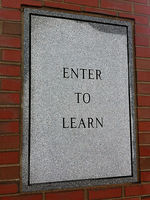Course guide
| Practice Context | |
|---|---|
| Practice Context Course Guide | Introduction & Learning Outcomes | Getting started | Teaching approach | Course schedule |
| Assessment | Practice Context assessment | Study plan | Developing an assessment portfolio | Referencing | |
Welcome to the Practice Context course.
This course provides you with understandings and insights into your role as a teriary educator and the context within which you work. This is a 15 credit, level 5 course which is designed using a discovery learning approach.
- There are four key areas that you will explore
- Digital Citizenship
- Reflective Practice
- Biculturalism
- Professionalism and Work Context
You will be guided to match these to your specific work areas of learning and teaching.
The schedule is designed for formal learners. Go to the section Getting Started to orientate yourself to the course and this site. Also welcome to informal learners. Please feel free to use the resources and information to add to your learning.
Note: If re-using the materials, please acknowledge the CC by attribution licence to attribute the authors of this content - Heather Day, Victor Fester and Bronwyn Hegarty from Otago Polytechnic, Dunedin, New Zealand (2016).
Learning Outcomes
At the successful completion of this course, you will be able to:
- Identify and demonstrate a range of digital literacy skills necessary within your own practice context;
- Demonstrate reflective practice skills and self-evaluation in relation to your own teaching;
- Apply the principles of Te Tiriti o Waitangi to your own practice context;
- Identify how you can appropriately use basic Te Reo Māori in your practice context;
- Explain concepts of Tikaka Māori, and how the concepts apply to your own practice context;
- Identify what it means to be a dual professional as both a tertiary educator and expert practitioner in the workplace;
- Identify the institutional /organisational strategies and priorities of your employer and describe the ways in which you incorporate those priorities within your practice.
Move to the page Getting Started to find your way around this course
